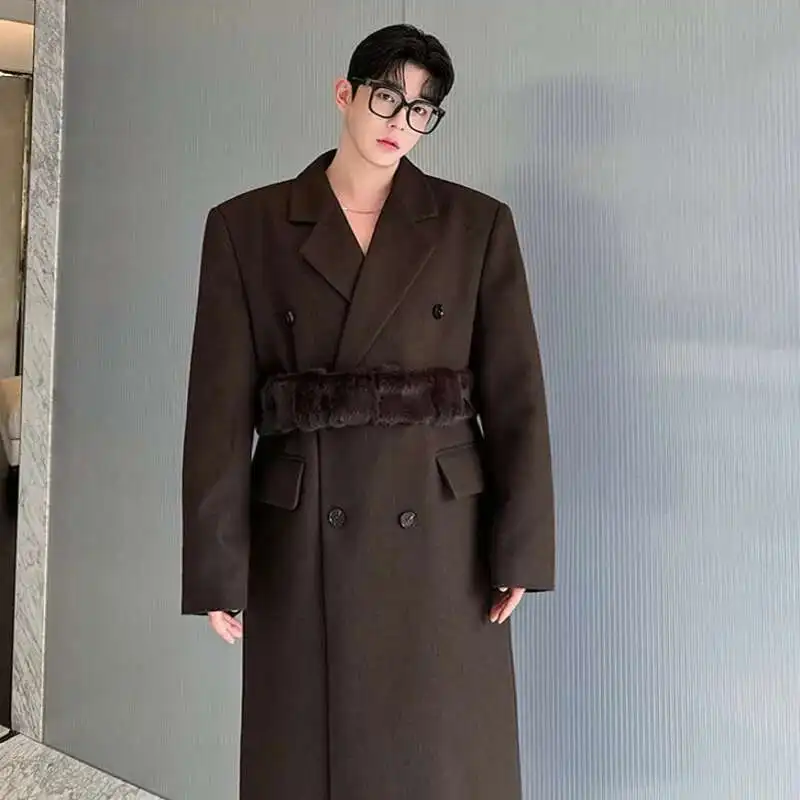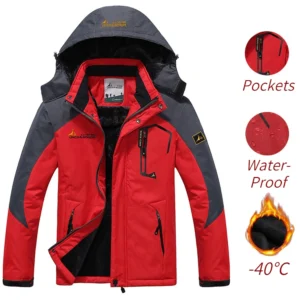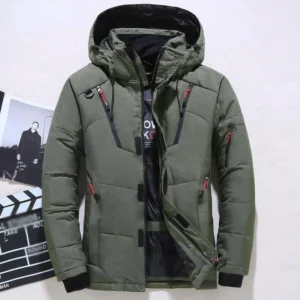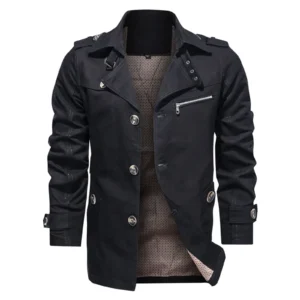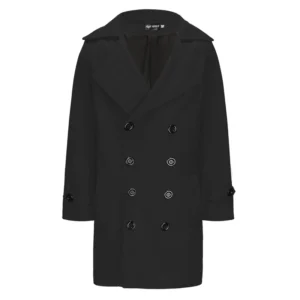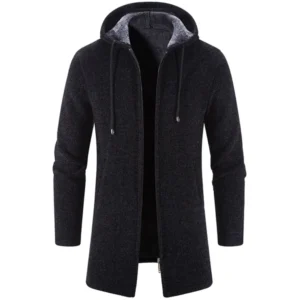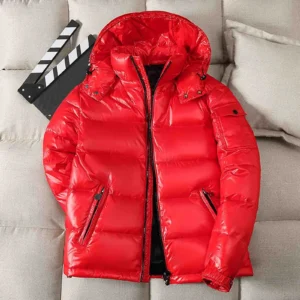Understanding the Superior Performance of Wool in Winter Conditions
When winter arrives with its biting winds and freezing temperatures, a quality wool overcoat becomes more than just a fashion statement—it’s essential protection against the elements. Wool overcoats stand as the cornerstone of cold-weather wardrobes for good reason, offering a perfect blend of sophisticated style and natural insulation.
What makes wool such an exceptional material for winter wear? The answer lies in its remarkable natural properties that have made it the preferred choice for cold-weather garments for centuries.
The science behind wool’s thermal efficiency is fascinating. Each wool fiber contains thousands of microscopic air pockets that trap body heat, creating an effective insulation layer around you. This natural structure explains why wool overcoats and their essential properties provide superior warmth even in the most challenging winter conditions.
Beyond warmth, wool offers exceptional advantages that synthetic materials simply can’t match:
- Superior moisture management – Wool can absorb up to 30% of its weight in moisture without feeling wet, preventing the chilling effect of dampness against your skin
- Natural breathability – While retaining heat, wool fibers allow excess warmth and moisture to escape, preventing overheating
- Water-resistant properties – The outer layer of wool fibers contains natural lanolin that repels light rain and snow
- Exceptional durability – Quality wool garments can last decades with proper care, making them true investment pieces
- Sustainable choice – As a renewable, biodegradable natural resource, wool represents an environmentally responsible option
Studies consistently show wool maintains effective insulation even when damp—a crucial advantage over down and many synthetics that lose their insulating properties when wet. This explains why wool has been the material of choice in cold, wet climates from the Scottish Highlands to Scandinavian countries for generations.
Wool Varieties: Choosing the Right Type for Maximum Warmth
Not all wool is created equal when it comes to winter protection. Understanding the distinct properties of different wool varieties helps you select the overcoat that best matches your specific cold-weather needs.
Virgin Wool: The Pure Standard
Virgin wool comes from a sheep’s first shearing, featuring intact, unbroken fibers that haven’t undergone previous processing. This results in longer fibers that provide excellent durability and insulation. Virgin wool creates overcoats with remarkable resilience, maintaining their shape and warmth performance over many years.
Merino Wool: Softness Meets Thermal Regulation
Merino wool stands out for its remarkably fine fibers—typically measuring 15-24 microns in diameter compared to regular wool’s 25-40 microns. This fineness creates a softer feel against the skin while trapping more body heat due to increased air pockets. Merino wool overcoats offer exceptional warmth without the characteristic itchiness some associate with wool garments.
Cashmere: Lightweight Luxury Insulation
Cashmere as a premium wool variety represents the pinnacle of luxury insulation. Derived from cashmere goats, these ultra-fine fibers (typically 15-19 microns) provide insulation that’s approximately three times warmer than regular wool despite being significantly lighter. This remarkable warmth-to-weight ratio makes cashmere overcoats ideal for those seeking maximum warmth without bulk.
Camel Hair: Natural Temperature Regulation
Camel hair offers unique temperature-regulating properties, providing excellent insulation in cold while remaining comfortable in milder conditions. Its distinctive golden-brown color and natural sheen make it a luxurious choice for distinguished overcoats.
Wool Blends: Engineered Performance
Modern wool blends and their performance often combine wool with synthetic or natural fibers to enhance specific properties. Common blends include:
- Wool/polyester: Increases durability and wrinkle resistance
- Wool/cashmere: Combines durability with enhanced softness
- Wool/nylon: Improves strength and abrasion resistance
| Wool Type | Warmth Rating | Softness | Durability | Weight | Price Range |
|---|---|---|---|---|---|
| Virgin Wool | 8/10 | 6/10 | 9/10 | Heavy | $$ |
| Merino Wool | 9/10 | 9/10 | 7/10 | Medium | $$$ |
| Cashmere | 10/10 | 10/10 | 6/10 | Light | $$$$ |
| Camel Hair | 8/10 | 8/10 | 7/10 | Medium | $$$$ |
| Wool Blends | 7/10 | 7/10 | 8/10 | Medium | $$ |
The micron measurement of wool fibers directly impacts both warmth and comfort. Finer fibers (lower micron count) create more air pockets for insulation while feeling softer against the skin. Premium overcoats typically feature wool in the 15-19 micron range for cashmere and 19-24 micron range for fine merino wool.
Understanding these wool varieties gives you the knowledge to evaluate overcoat quality beyond mere appearance, ensuring your winter investment delivers the performance you need.
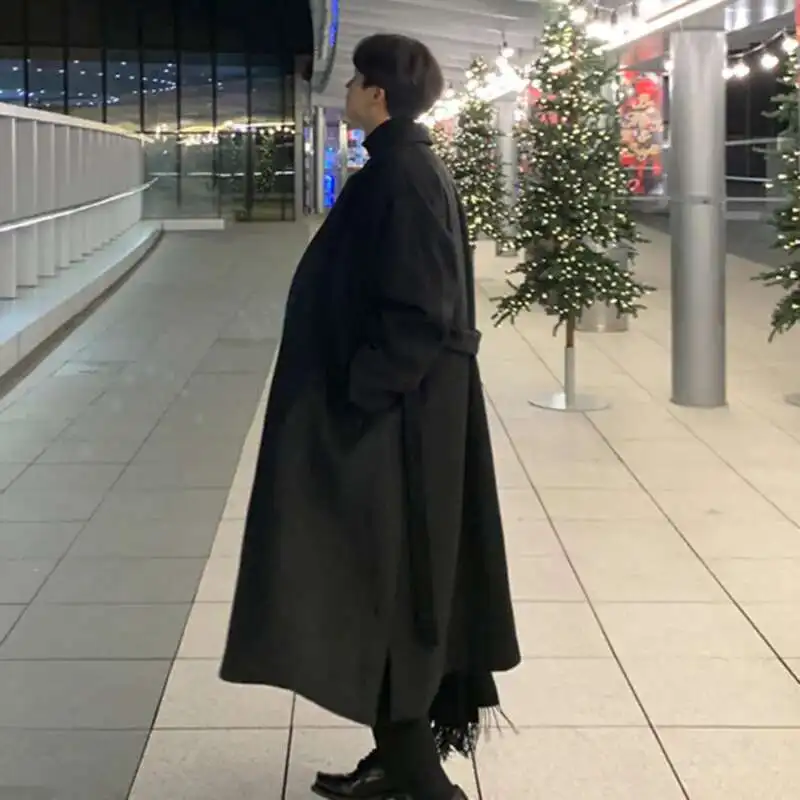
Essential Construction Features for Cold-Weather Wool Overcoats
The warmth of a wool overcoat depends not just on the material itself but on crucial construction elements that transform fine fabric into a cold-weather shield. Understanding these features helps you identify genuinely warm overcoats versus those that merely look substantial.
Fabric Weight: The Foundation of Warmth
Fabric weight serves as the most direct indicator of an overcoat’s potential warmth. Measured in grams per square meter (GSM) or ounces per yard, heavier fabrics generally provide better insulation:
- Light overcoats: 400-500 GSM (14-16 oz) – Suitable for mild winters or layering
- Medium overcoats: 500-600 GSM (16-19 oz) – Good for moderate winter conditions
- Heavy overcoats: 600+ GSM (19+ oz) – Ideal for severe cold
In truly frigid conditions, look for overcoats approaching or exceeding 700 GSM (22 oz), which provide substantial protection even during extended outdoor exposure.
Weave Patterns: Engineering Wind Resistance
The way wool fibers are woven significantly impacts an overcoat’s ability to block wind—often the most chilling element of winter weather. Tight weave patterns like herringbone for wind resistance create a denser fabric structure that prevents cold air from penetrating. Other effective cold-weather weaves include:
- Twill: Diagonal pattern creating a tight, durable surface
- Melton: Heavily felted with fibers tightly interlocked
- Gabardine: Tightly woven with diagonal ribs for excellent wind protection
Lining and Interlining: The Hidden Insulation
While wool provides natural warmth, quality overcoats incorporate strategic layers that enhance thermal performance:
- Shell: The outer wool layer
- Interlining: A middle insulation layer often made of flannel, Thinsulate, or chamois
- Lining: The inner fabric layer that provides comfort and additional insulation
Premium cold-weather overcoats feature full linings extending through the sleeves, with materials like Bemberg or silk offering lightweight comfort while synthetic thermal linings maximize warmth.
Structural Elements for Cold Protection
Several design features significantly enhance an overcoat’s cold-weather performance:
- Length: Selecting appropriate coat length affects both style and function, with longer coats providing more leg protection
- Closure design: Double-breasted designs for better protection create an overlapping front panel that prevents wind penetration
- Collar construction: Convertible collars that can be turned up provide critical neck protection
- Storm flaps: Additional fabric layers covering closures prevent wind infiltration
- Wind cuffs: Inner sleeve extensions that seal against the wrist
- Throat latches: Additional collar closures for maximum neck protection
Quality construction details like reinforced buttonholes, hand-stitched seams, and properly designed vents ensure durability while maintaining thermal integrity. When inspecting potential overcoats, examine these elements closely—they often distinguish truly warm garments from merely fashionable ones.
Matching Your Overcoat to Your Cold Weather Needs
Finding the perfect wool overcoat requires matching its characteristics to your specific winter conditions and lifestyle. This personalized approach ensures your investment delivers optimal protection when you need it most.
Assessing Your Climate Requirements
Begin by analyzing the typical winter conditions you face:
- Temperature range: Average lows and extreme cold snaps determine minimum insulation needs
- Precipitation type: Frequent wet snow demands greater water resistance
- Wind exposure: Urban canyons or open areas with high winds require tighter weaves and protective features
- Humidity levels: Damp cold feels colder than dry cold, requiring different insulation strategies
Usage Scenarios and Their Demands
Different winter activities place unique demands on your overcoat:
Urban Commuting
– Moderate durability for daily wear
– Emphasis on versatility between indoor/outdoor environments
– Features for quick donning/removal
– Considerations for public transit crowding
Outdoor Extended Wear
– Maximum insulation for prolonged exposure
– Superior wind resistance
– Enhanced coverage with optimal full coat length for winter protection
– Adaptability to activity levels
Formal Settings
– Balanced performance without compromising appearance
– Appropriate styling for business or evening events
– Compatibility with suits and formal attire
When selecting your overcoat, consider these factors alongside layering possibilities. An overcoat that accommodates a suit jacket or sweater underneath provides versatility for fluctuating winter conditions. The ideal fit allows for this layering without restricting movement or creating bulk.
For those facing truly challenging winter conditions, options for extreme cold weather protection prioritize function while maintaining style. Features like higher wool content, tighter weaves, and protective collars become non-negotiable when temperatures plummet.
Remember that finding your perfect winter wool overcoat often means balancing competing factors. While warmth remains the primary function, your specific lifestyle, commute distance, time outdoors, and formality requirements all influence which features deserve priority in your selection.
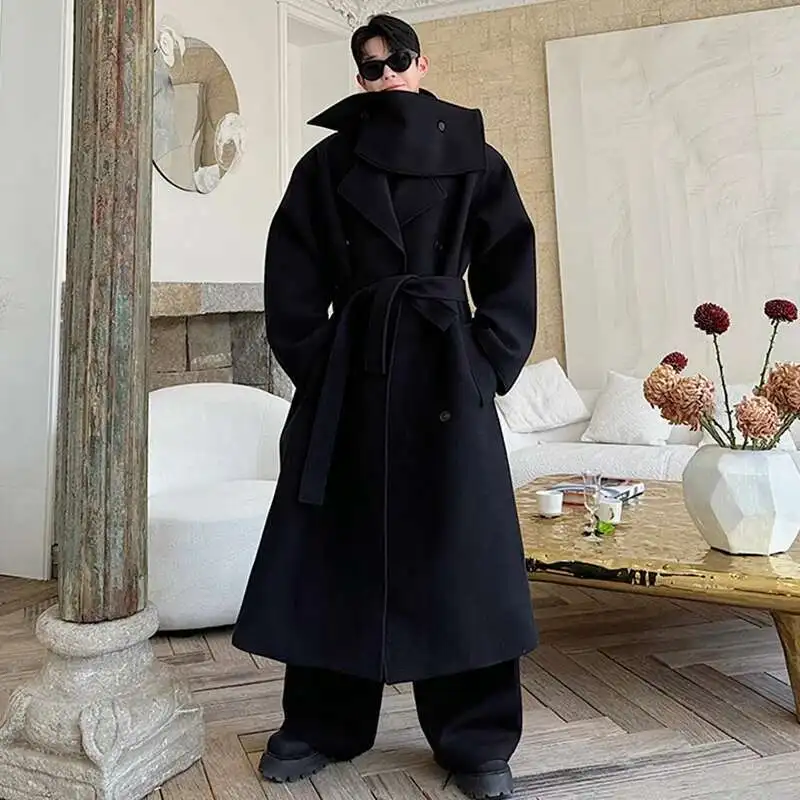
Superior Wool Overcoats for Extreme Cold Temperatures
When temperatures plummet into truly frigid territory, not just any wool coat will provide adequate protection. The finest cold-weather wool overcoats combine specific materials, construction techniques, and design features to create exceptional thermal performance.
Heavyweight Champions for Extreme Cold
For the most challenging winter conditions, these overcoats deliver maximum protection:
The Arctic Defender
– Material: 100% virgin wool at 700+ GSM (22+ oz)
– Construction: Double-faced wool with no separate lining needed
– Distinctive features: Extended length covering thighs, oversized collar, throat latch
– Performance: Suitable for temperatures well below freezing, even in wind
– Best for: Extended outdoor exposure in severe northern winters
The Metropolitan Shield
– Material: 90% wool/10% cashmere blend at 650 GSM (20 oz)
– Construction: Melton weave with Thinsulate interlining
– Distinctive features: Double-breasted closure, convertible collar
– Performance: Excellent urban protection with refined appearance
– Best for: Daily commuters in cold, windy cities
All-Around Performers
These versatile performers balance serious cold protection with adaptability:
The Classic Commander
– Material: 80% wool/20% nylon blend at 600 GSM (19 oz)
– Construction: Twill weave with quilted satin lining
– Distinctive features: Single-breasted with concealed placket
– Performance: Strong wind resistance with moderate weight
– Best for: Variable winter conditions requiring business-appropriate styling
The Modern Guardian
– Material: 100% merino wool at 550 GSM (17 oz)
– Construction: Tight herringbone weave with flannel interlining
– Distinctive features: Raglan shoulders for layering ease
– Performance: Excellent warmth-to-weight ratio with superior comfort
– Best for: Active professionals needing movement freedom without sacrificing warmth
Our extensive range of winter coat options for extreme cold includes styles that combine protective features with Metro Cloak’s signature sophistication. For those seeking maximum coverage, full-length protection options for severe cold extend below the knee for uncompromising warmth.
Mens Heavy Winter Coat, Mens Insulated Coat, Mens Parka Coat
Price range: $175.52 through $237.36 Select options This product has multiple variants. The options may be chosen on the product pageMens Big and Tall Winter Coats, Mens Down Coat, Mens Hooded Winter Coat, Mens Puffer Coat
Price range: $126.44 through $217.01 Select options This product has multiple variants. The options may be chosen on the product pageMens Big and Tall Winter Coats, Mens Hooded Winter Coat
Price range: $80.32 through $106.68 Select options This product has multiple variants. The options may be chosen on the product pageMens Double Breasted Pea Coat, Mens Wool Blend Coat, Mens Wool Pea Coat
Price range: $136.84 through $157.36 Select options This product has multiple variants. The options may be chosen on the product pageMens Cashmere Overcoat, Mens Hooded Winter Coat, Mens Wool Blend Coat
Price range: $128.72 through $139.68 Select options This product has multiple variants. The options may be chosen on the product pageMens Hooded Winter Coat, Mens Insulated Coat, Mens Puffer Coat, Mens Quilted Coat
Price range: $139.88 through $177.72 Select options This product has multiple variants. The options may be chosen on the product page
When evaluating premium wool overcoats for extreme cold, pay particular attention to winter coat warmth ratings and selection details. The finest coats provide comprehensive information about their insulation properties, including weight, wool type, and temperature suitability. These specifications help match the garment to your specific climate challenges.
Remember that exceptional cold-weather performance often comes with a higher price tag. However, when viewed as a long-term investment in winter comfort that will serve you for many years, premium wool overcoats deliver excellent value through their durability and timeless styling.
Master Layering: Maximizing Your Wool Overcoat’s Warmth
Even the finest wool overcoat performs better with strategic layering. Understanding how to combine garments creates a comprehensive thermal system that maximizes protection while maintaining comfort and freedom of movement.
The Science of Effective Layering
Proper layering creates multiple insulating air spaces while managing moisture—the enemy of winter warmth. Each layer serves a specific function in your thermal regulation system:
- Base layer: Manages moisture by wicking perspiration away from skin
- Mid-layer: Provides primary insulation by trapping warm air
- Outer layer (your wool overcoat): Blocks wind and repels precipitation
This system works because still air is an excellent insulator, while the ability to add or remove layers allows adaptation to changing conditions or activity levels.
Ideal Base Layers for Winter Warmth
The foundation of effective cold-weather layering starts next to your skin:
- Merino wool undergarments: Natural temperature regulation with excellent moisture management
- Technical synthetics: Maximum moisture wicking for active movement
- Silk undergarments: Lightweight warmth for less active scenarios
Avoid cotton base layers in cold weather—when damp from perspiration, cotton loses insulating properties and conducts heat away from your body.
Strategic Mid-Layer Selection
The mid-layer provides your primary insulation under your wool overcoat:
- Cashmere sweaters: Superior warmth-to-weight ratio with elegant appearance
- Merino wool cardigans: Versatile temperature control through buttoning options
- Down vests: Core warmth with freedom of arm movement
- Technical fleece: Maximum insulation for extreme cold
For formal settings, a suit jacket can serve as an effective mid-layer when properly sized. Ensure your suit jacket doesn’t create excess bulk while allowing proper fit when layering under overcoats.
Technical Layering Considerations
Mastering wool overcoat layering requires attention to several technical details:
- Graduated sizing: Each outer layer should be slightly larger than the one beneath
- Complementary neck styles: Crew necks under V-necks, turtlenecks under notched collars
- Strategic overlap: Ensure no gaps between layers, particularly at the waist and neck
- Sleeve coordination: Guidance on appropriate sleeve and coat length prevents exposed wrists
By thoughtfully combining these layering principles, you can significantly extend your wool overcoat’s effective temperature range while maintaining a refined appearance. This versatility transforms your overcoat from a single-season garment into a adaptable year-round investment.
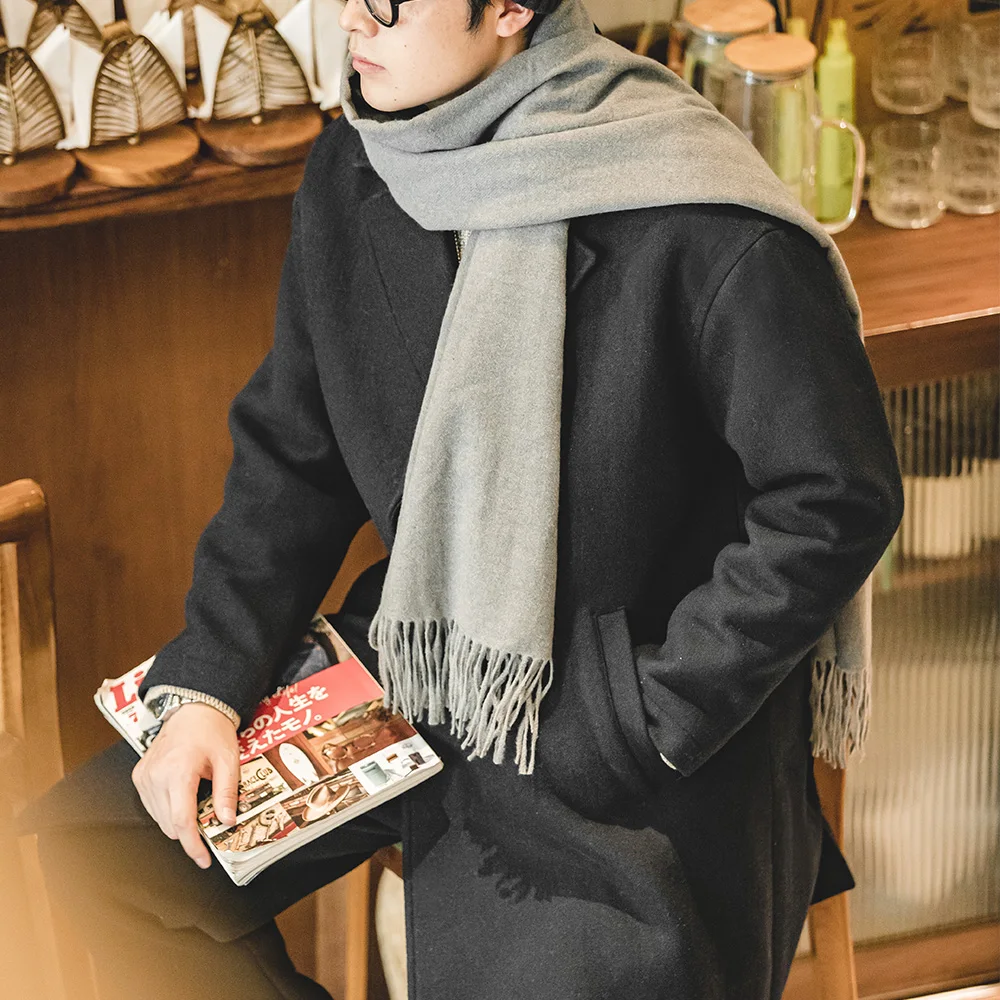
Professional Care for Long-Lasting Warmth Performance
A quality wool overcoat represents a significant investment—one that can deliver decades of warmth and style when properly maintained. Understanding wool’s specific care requirements preserves both its insulating properties and distinguished appearance.
Preserving Wool’s Thermal Properties
Wool’s remarkable insulation comes from its complex fiber structure. Proper care maintains these natural properties:
- Brush regularly: Use a soft clothes brush to remove surface dirt and restore the nap after each wear
- Allow rest periods: Give your overcoat 24 hours between wearings to recover its shape and release moisture
- Address moisture properly: If your coat gets wet, hang it to dry naturally at room temperature—never use direct heat, which can damage wool fibers
- Store correctly: Use wide, shaped hangers that support the shoulders to maintain structure
Cleaning Considerations for Different Wool Types
Different wool varieties require tailored cleaning approaches:
Regular Wool Overcoats
– Professionally dry clean once per season (more only if visibly soiled)
– Spot clean minor marks with a damp cloth and mild soap
– Brush after each wearing to remove surface particles
Cashmere and Fine Merino Blends
– Use specialized wool detergents for hand washing when appropriate
– Dry clean less frequently to preserve natural lanolin
– Store with cedar blocks rather than mothballs to prevent odor absorption
Wool Blends
– Check care labels for specific instructions based on blend percentages
– Some wool/synthetic blends may tolerate gentle machine washing
– Always air dry regardless of blend composition
Expert Maintenance Routine
Implement this seasonal maintenance schedule for optimal performance:
Beginning of Winter
– Remove from storage and inspect for moth damage
– Steam lightly to refresh fibers and remove storage wrinkles
– Apply fabric protector appropriate for wool if desired
During Winter Use
– Brush after each wearing, focusing on collar and cuffs
– Allow full drying before storing after snow or rain exposure
– Address spots and spills immediately before they set
End of Season
– Professional cleaning to remove accumulated oils and pollutants
– Complete drying before storage
– Store in breathable garment bags with cedar protection
Understanding maintenance considerations for different coat lengths helps address the specific wear patterns that affect shorter versus longer overcoats.
Remember that proper care not only maintains your overcoat’s appearance but preserves its thermal efficiency—ensuring that your winter companion continues to deliver reliable warmth performance season after season.
Wool Overcoats vs. Alternative Winter Outerwear
While wool overcoats represent a classic cold-weather solution, modern winter outerwear offers diverse alternatives. Understanding how wool compares to these options helps you make informed decisions based on your specific needs.
Comparative Performance Analysis
| Wool Overcoats | Down Jackets | Synthetic Insulation | |
|---|---|---|---|
| Wet Weather Performance | Moderate resistance, maintains some warmth when damp | Poor when wet, loses loft and insulation | Good to excellent, maintains insulation when wet |
| Wind Resistance | Varies by weave, generally moderate | Requires shell fabric for wind protection | Typically includes windproof outer layer |
| Durability | Excellent (decades with care) | Moderate (feather loss over time) | Variable (3-7 years typical) |
| Warmth-to-Weight | Moderate | Excellent | Good |
| Temperature Adaptability | Excellent across varying conditions | Best for consistent cold | Good but can cause overheating |
| Maintenance | Moderate (seasonal cleaning) | Delicate (special cleaning) | Easy (machine washable) |
| Environmental Impact | Low (renewable, biodegradable) | Variable (ethical sourcing concerns) | Higher (petroleum-based) |
Scenario-Based Comparison
Dry, Very Cold Conditions (-10°F/-23°C and below)
While down alternatives offer exceptional insulation in dry, extreme cold, heavyweight wool overcoats provide comparable warmth with superior durability and classic styling. The choice often comes down to activity level and style preference rather than thermal performance.
Wet, Moderately Cold Conditions (25-40°F/-4-4°C)
In these challenging conditions, wool significantly outperforms down, which loses insulating properties when damp. Quality wool naturally repels light moisture while maintaining warmth, making it ideal for winter drizzle or light snow.
Urban Environments with Variable Exposure
Wool overcoats excel in scenarios requiring transitions between outdoor exposure and heated indoor environments. Their breathability prevents overheating when entering warm buildings, while their weight provides stability in gusty urban wind corridors.
Active Winter Use
For high-activity winter scenarios, technical synthetic outerwear typically offers better performance through greater moisture management and reduced weight. However, wool-synthetic blends are increasingly bridging this gap for active commuters.
The ideal solution often depends on your specific lifestyle and winter challenges. Many winter enthusiasts maintain both a wool overcoat for business and formal occasions and technical outerwear for recreational activities—leveraging the strengths of each in appropriate contexts.
Expert Answers: Common Questions About Wool Overcoats for Winter
What temperature range can a wool overcoat effectively handle?
A quality wool overcoat typically performs well between 20°F and 45°F (-7°C to 7°C). Heavyweight wool overcoats (600+ GSM/19+ oz) can handle temperatures down to 0°F (-18°C) with proper layering. Below these temperatures, specialized extreme-weather garments become necessary unless your exposure is very brief.
How can I identify quality wool when shopping in person?
Quality wool exhibits a springy resilience when gently compressed between your fingers, returning to shape quickly rather than remaining creased. Look for clear, consistent fiber appearance and perform the “pinch test”—quality wool feels smooth when pinched and slid between thumb and forefinger, while lower-quality wool creates a rougher sensation. For cashmere specifically, the hand feel should be noticeably softer than regular wool.
Will wool protect me in rain and snow?
Wool naturally repels light precipitation due to its lanolin content and complex fiber structure. Most wool overcoats can handle light snow and brief rain exposure without compromising warmth. However, during heavy or prolonged precipitation, additional protection becomes necessary. Wool’s advantage is maintaining significant insulating properties even when damp, unlike down and many other materials.
How much should I expect to invest in a quality wool overcoat?
A good-quality wool overcoat typically starts around $300-400, with premium options ranging from $700-1,500. Investment-grade overcoats featuring cashmere blends, superior construction, and exceptional tailoring can exceed $2,000. While significant, this investment typically amortizes to a reasonable annual cost given the decades-long lifespan of quality wool garments.
Can I make my existing wool overcoat warmer for extreme cold?
Yes, several approaches can enhance an overcoat’s warmth: add strategic layering with technical base layers and insulating mid-layers; incorporate a wool scarf to seal the neck opening; add wind protection with a thin windproof layer underneath; or have a tailor add a specialized interlining to increase insulation without altering the coat’s external appearance.
How do I choose between full-length and shorter overcoats?
This decision balances warmth requirements with practical considerations. Finding the ideal coat length for winter conditions involves assessing typical exposure scenarios. Full-length coats provide maximum protection for commuters with significant walking or waiting outdoors. Shorter coats offer better mobility for drivers and those with limited outdoor exposure. Body proportions also matter—selecting the most flattering coat length ensures both comfort and style.

Men’s Styling Guide: Creating Sophisticated Cold-Weather Looks
A wool overcoat serves as the cornerstone of refined winter style, framing your entire cold-weather appearance. Mastering how to style this investment piece ensures you project sophistication while maintaining practical warmth.
Achieving Perfect Proportion and Fit
The foundation of overcoat style begins with proper proportions:
Length considerations: Styling tips for different coat lengths should guide your selection based on height and build. Generally, taller men can carry longer coats elegantly, while styling advice for optimal proportions helps shorter men avoid being overwhelmed by excess fabric.
Shoulder fit: The overcoat’s shoulder seam should align with or extend just slightly beyond your natural shoulder—never significantly wider or narrower.
Chest room: Allow approximately 2-3 inches of extra room beyond your suit jacket measurement to accommodate layering without creating a shapeless silhouette.
Business and Formal Styling
For professional environments, your overcoat should complement formal attire while providing practical protection:
With Business Suits
– Match overcoat formality to your typical business attire
– Versatile styling options with black wool coats pair effortlessly with gray, navy, and black suits
– Maintain consistent color temperature—cool-toned suits with cool-toned coats
– Ensure your coat extends below your suit jacket by at least 2-3 inches
For Formal Evening Events
– Dark charcoal or black wool in a cleaner, minimalist design
– Consider peak lapels for black-tie compatibility
– Cashmere or cashmere-wool blends elevate luxuriousness
– Styling guidelines for long wool coats create a commanding formal presence
Casual Weekend Elegance
Wool overcoats transition beautifully to sophisticated casual wear:
Smart Casual Pairings
– Layer over merino turtlenecks or cashmere crewnecks
– Pair with dark denim and leather boots for refined weekend style
– Add textured scarves in complementary colors
– Consider brown or navy coats for a softer weekend appearance
Contemporary Casual
– Experiment with unexpected combinations like overcoats with premium sneakers
– Layer over hoodies for modern high-low styling
– Consider guidance on styling longer overcoats for winter with more casual elements
Accessory Integration for Complete Winter Style
Thoughtfully chosen accessories enhance both the function and appearance of your overcoat:
Scarf Selection and Styling
– Choose complementary colors rather than exact matches
– For maximum warmth, select cashmere or wool in substantial weight
– Master classic draping techniques: Parisian knot for formality, loose drape for casual settings
Hat Coordination
– Formal settings: Consider classic felt fedoras or wool flat caps
– Casual contexts: Merino beanies in coordinating colors
– Maintain consistent formality between hat and coat styles
Glove Selection
– Business settings: Leather gloves in black or brown with or without cashmere lining
– Casual wear: Wool-blend or deerskin options in complementary colors
– Ensure sufficient length to prevent gap between coat sleeve and glove
By approaching your winter wardrobe with these styling principles, your wool overcoat becomes not just a practical necessity but a sophisticated expression of personal style that elevates every winter ensemble.
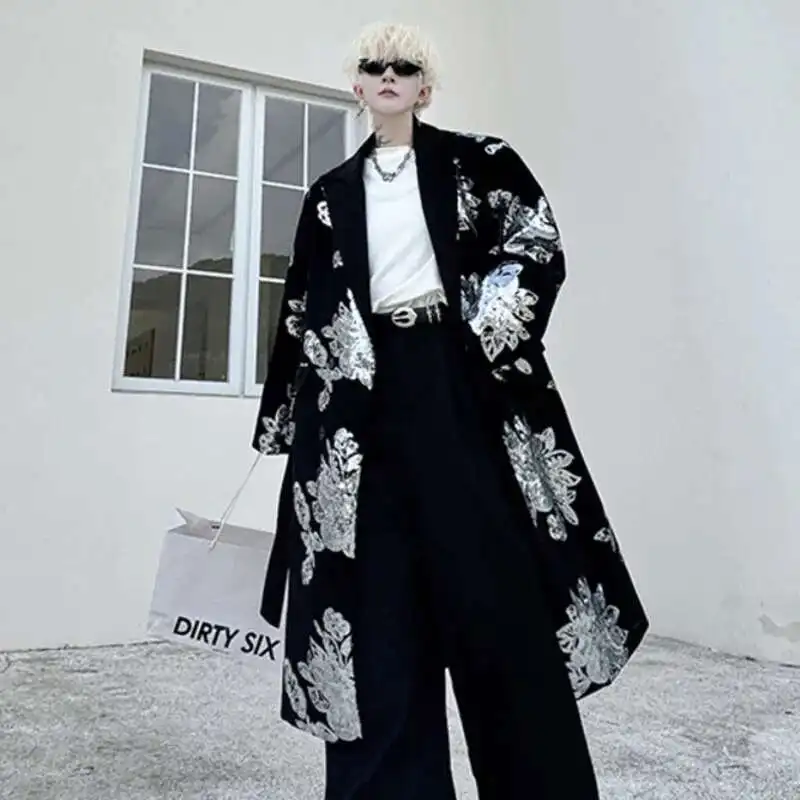
Conclusion: Making Your Wool Overcoat Investment
A premium wool overcoat represents far more than a seasonal purchase—it’s a long-term investment in winter comfort, style, and protection. Throughout this guide, we’ve explored the remarkable natural properties that make wool the superior choice for cold-weather outerwear: exceptional insulation, moisture management, breathability, and durability that synthetic alternatives simply cannot match.
When selecting your wool overcoat, remember to prioritize these essential elements:
- Material quality – The specific wool type and weight directly determine warmth potential
- Construction excellence – From weave patterns to internal structure, these details define performance
- Functional features – Collar design, closure systems, and length significantly impact cold protection
- Versatile styling – Select a classic design that complements your existing wardrobe
While quality wool overcoats represent a significant initial investment, their exceptional longevity transforms them into remarkable value over time. A well-made wool coat often serves faithfully for 10-20 years or more with proper care—a testament to wool’s enduring performance and timeless appeal.
Consider your specific climate challenges and lifestyle requirements when making your selection. Those facing severe winters benefit from heavier weights and protective features, while those in milder regions might prioritize versatility across varying conditions.
With proper maintenance and care, your wool overcoat will reward you with decades of reliable winter protection while maintaining its distinguished appearance—a true winter companion that combines practical function with enduring style.

